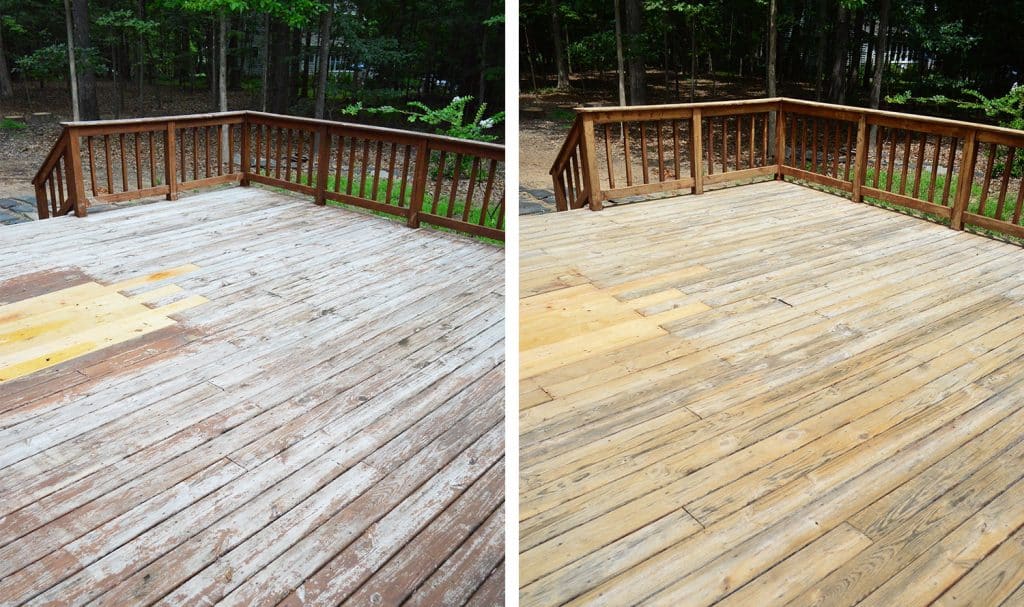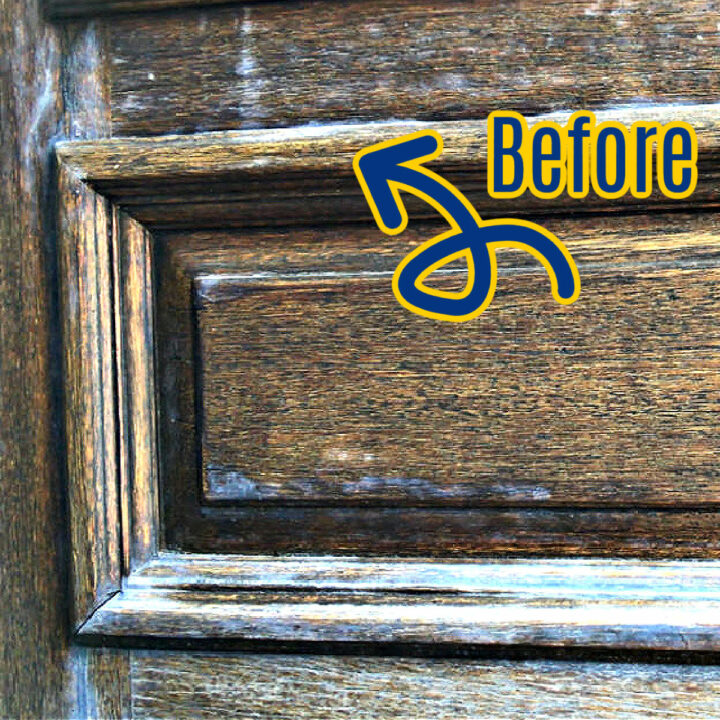To fix wood damaged by a pressure washer, sand the affected area and apply a wood stain or sealant.

Credit: www.younghouselove.com
Page Contents
Signs Of Pressure Washer Damage
Pressure washing wood surfaces can cause cracks or splinters to form. The high pressure of the water can penetrate the wood and weaken its structure, leading to visible damage. If you notice any cracks or splintering on your wood surfaces after pressure washing, it is a clear sign of damage.
Another sign of pressure washer damage is when the wood appears discolored or faded. The force of the water can strip away the natural oils and pigments of the wood, leaving it looking dull and washed out. If your wood surfaces have lost their vibrant color after pressure washing, it indicates that the wood has been affected.
When using a pressure washer on wood, the high pressure water can dislodge nails or cause them to become loose. This can result in unstable or damaged wood structures. If you notice any nails protruding or the wood feels loose or shaky, it is a sign that the pressure washing has caused damage.
Fixing Cracked Or Splintered Wood
Assess the extent of the damage by inspecting the cracks or splinters on the wood. Determine if it is necessary to replace the damaged wood or if it can be fixed. Start the repair process by sanding the affected area. Use coarse sandpaper to smooth the surface and gradually switch to finer grits to achieve a polished finish. Fill the cracks or splinters using wood filler or epoxy resin, applying it carefully and smoothing it with a putty knife.
Once the filler is dry, sand the repaired area to ensure a seamless blend. To enhance the appearance, apply an appropriate wood stain or paint that matches the original color. Lastly, seal the repaired wood with a protective coating to safeguard it from future damage.
Treating Discolored Or Faded Wood
Revive discolored or faded wood damaged by a pressure washer with these proven techniques. Restore the original beauty of your wood and bring it back to life.
| Treating Discolored or Faded Wood |
| Clean the Wood Surface |
| 1. Remove dirt, grime, and mildew with a mild cleaner. |
| 2. Scrub gently with a soft brush or sponge. |
| 3. Apply wood brightener or restorer. |
| 4. Choose a suitable product for your wood type. |
| 5. Follow the manufacturer’s instructions for application. |
| 6. Rinse and let the wood surface dry. |
| 7. Thoroughly rinse the wood surface. |
| 8. Allow sufficient time for drying. |
Fixing Loose Or Damaged Nails
When it comes to fixing loose or damaged nails on wood that has been pressure washed, the first step is to identify any nails that are protruding or missing. Carefully inspect the wood surface for any visible nailheads. If you notice any loose or damaged nails, you will need to remove them. To do this, use a claw hammer or a nail puller, ensuring that you pull the nails out gently to minimize further damage to the wood. Once the nails have been removed, it’s time to replace them with suitable fasteners. Depending on your wood type, choose either screws or galvanized nails as replacements. Make sure to drive the screws or nails into pre-drilled holes to prevent splitting of the wood. After the fasteners have been secured, you can fill any remaining holes with wood filler and sand the spot smoothly.
Precautions To Prevent Pressure Washer Damage
Wood can easily get damaged when subjected to high-pressure water from a pressure washer. To prevent such damage, it is crucial to take precautions and use the correct pressure and nozzle settings. Make sure to keep a safe distance from the wood surface, as applying too much pressure or holding the nozzle too close can cause the wood to splinter or crack. It is advisable to test the pressure washer on a small area before proceeding to clean the entire surface. This helps to determine the appropriate pressure and nozzle setting to use. Using a wide spray pattern also distributes the pressure more evenly and reduces the risk of damaging the wood. Lastly, regular inspection and maintenance of your pressure washer ensure that it is working effectively and prevents any potential issues during use.
Frequently Asked Questions On How To Fix Wood Damaged By Pressure Washer
Why Does Wood Get Damaged By Pressure Washer?
Wood can get damaged by a pressure washer because the high-pressure water can strip away the protective layer of the wood, causing it to become vulnerable to rot, cracking, and warping. Additionally, excessive pressure can force water into the wood, leading to swelling and further damage.
Can Pressure Washer Damage Be Fixed On Wood?
Yes, pressure washer damage can be fixed on wood. Start by drying the wood thoroughly and sanding away any rough or splintered areas. Apply a wood sealer or preservative to protect against moisture and then repaint or stain the wood as needed.
If the damage is extensive, you may need to replace damaged sections.
How Can I Prevent Wood Damage From A Pressure Washer?
To prevent damage to wood when using a pressure washer, adjust the nozzle to a lower pressure setting and maintain a safe distance between the nozzle and the wood surface. Avoid using excessive force, and consider using a wide-angle spray pattern to distribute the pressure more evenly.
Pre-treating the wood with a protective sealant can also help prevent damage.
Conclusion
To conclude, fixing wood damaged by a pressure washer requires patience, precision, and the right techniques. By properly evaluating the extent of the damage, using appropriate cleaning solutions, and meticulously sanding and refinishing the wood, you can restore its beauty and durability.
Remember to always follow safety precautions and invest in preventive measures to avoid unnecessary damage in the future. By taking these necessary steps, you can enjoy the benefits of a beautifully restored wooden surface for years to come.

